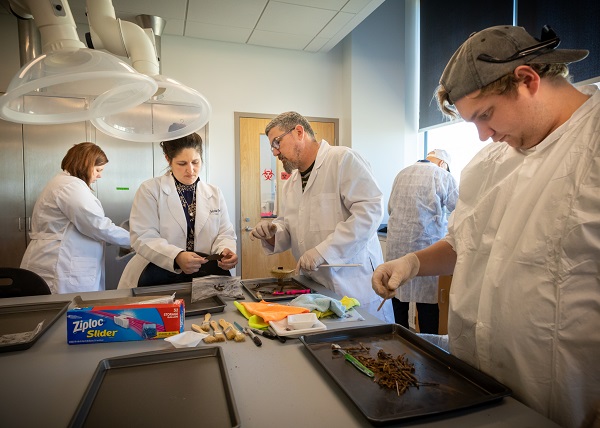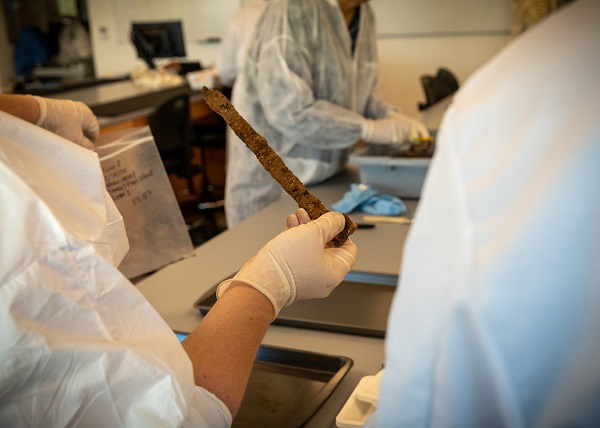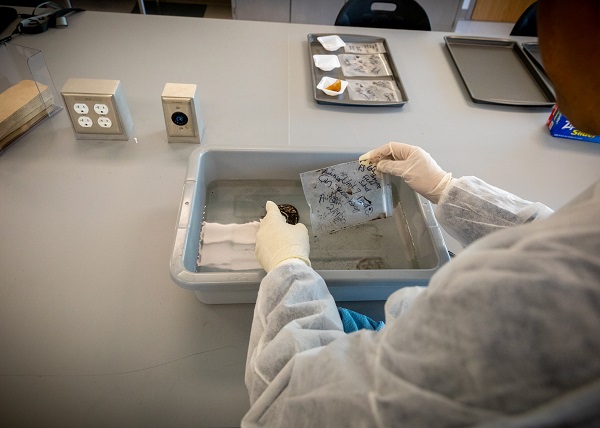Located in the small town of Maxdale, Texas, the Priddy Cabin is believed to be one of the earliest structures in this once nineteenth-century boom town. It is also one of few settlement cabins in Central Texas that is still intact. From January to March, the Priddy Cabin was an excavation site for Dr. Christine Jones and the students in her Archaeology Field School class. Their goal? Find artifacts that could date the site and give insight to what life was like at this early settlement.
It was a cool, sunny day at the Priddy Cabin excavation site. Students shuffled in and out of a metal building carrying heavy buckets, dumping them into a large sifter on the left side of the building. There were sounds of shovels breaking up the ground and dirt being moved across the sifter in the distance. Students and Dr. Jones, Assistant Professor of Anthropology at Texas A&M University-Central Texas, had spent the last four weeks excavating the site and had three more to go before the mini-mester wrapped.
“We don’t know that much about the history here. That’s part of why we’re here,” said Dr. Jones.
Establishing the Excavation site
Dr. Jones applied for and was granted an Antiquities permit from the Texas Historical Commission to excavate the site with her students. Following permission from the owners of the land, the Texas Juvenile Justice Department, fieldwork began earlier this year.
“It is super important [to study the site] because it represents the early pioneer settlement of Central Texas,” said Dr. Jones. “ We are really lucky to be able to study this site.”
Before digging took place, students had to first map the site. They used measuring tape and a measuring laser range finder to map dimensions of the cabin, and also established which way was north and south. Next they used shovel testing to decide where to dig and determined how deep their square digging holes, also known as units, would be.
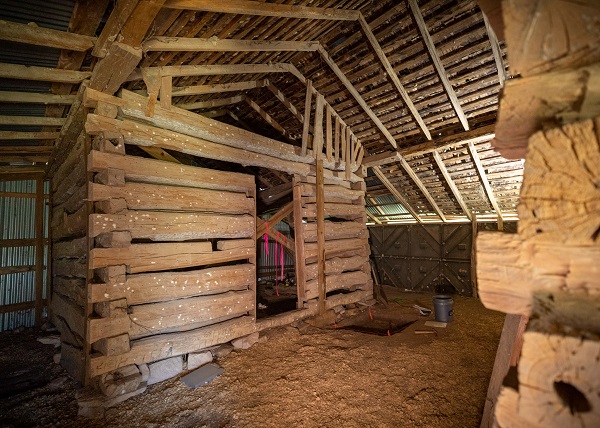
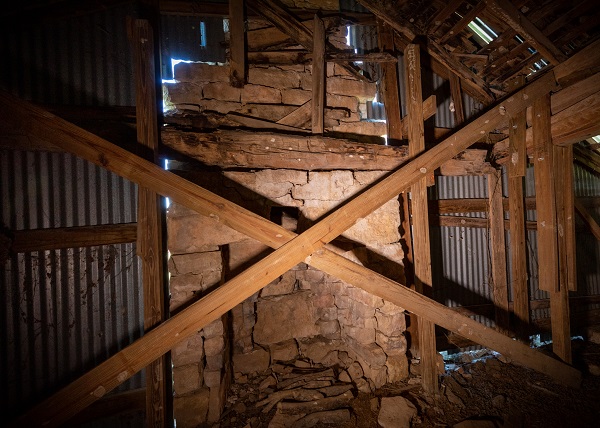
Let’s Get Digging
Enclosed in a large metal building to protect it from the environment and provide structural support, the Priddy Cabin contains two smaller rooms, aptly labeled North and South. Students wore gloves, and some even masks, as they dug in the dirt using the light from the high voltage lamps to illuminate their work areas. There were some units located outside of the cabin as well. During shovel testing, and with the help of a metal detector, the class determined that these spots would be good dig locations.
Graduate student Christopher Borders was excited to be digging in the dirt and looking for artifacts.
“I’m looking to find any artifacts that would tell us the past history of this location,” said Borders.
For Borders, his favorite part of the class was doing archival research at the Bell County Museum and courthouse. In the archives he found the land history of the area from 1845 to present and the ownership in between.
“It was fascinating to get the known history that I had to dig for and then to compare it with what I was seeing here at the site with the glass bottles and different finds that were here,” said Borders.
A medication bottle labeled Pinex, was one his most exciting finds. Its contents were most likely a mix of pine resin, chloroform and alcohol.
Over at unit two, on the side of the south room, students William Kunce and David Assing were busy searching for artifacts. As Assing broke up the ground with the shovel, Kunce swept up the dirt and placed it into a large five-gallon bucket. They had already made it through 20 centimeters of ground and were working on their last ten. They worked fast, but carefully as well.
“It’s all about digging a hole out that’s clean and as nice as you can while trying to preserve whatever is inside,” said Kunce.
Their biggest find in the unit was a belt buckle in level two.
“It was really cool to find this one because we’ve been finding a lot of nails and glass, and finally we found something tangible in our unit,” said Kunce, “because I didn’t get to work on the units that found the completed bottles, and any of those things.”
In previous units, Assing and Kunce found nails, glass, wires, pieces of ceramics, and even a farming hoe.
“When you find something, you’re kinda happy about it,” said Assing.
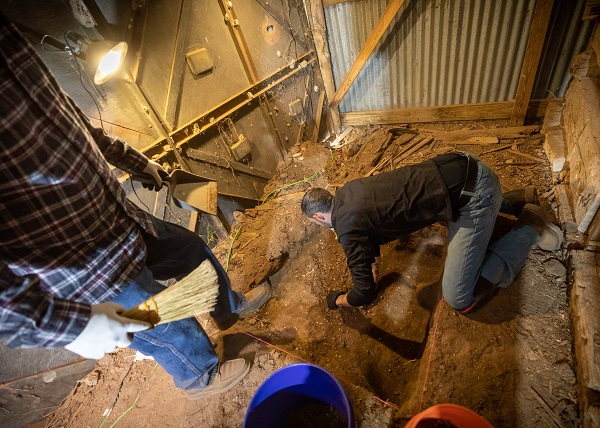
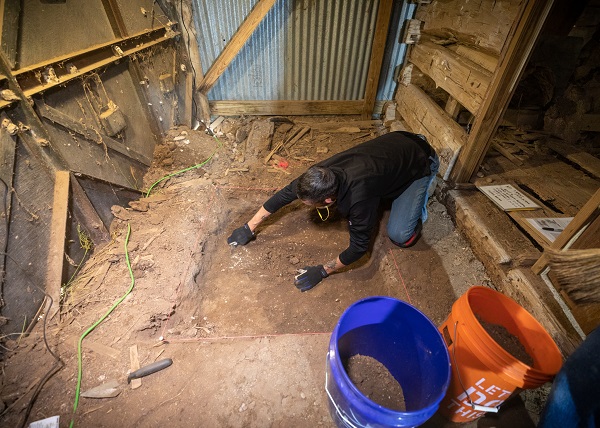
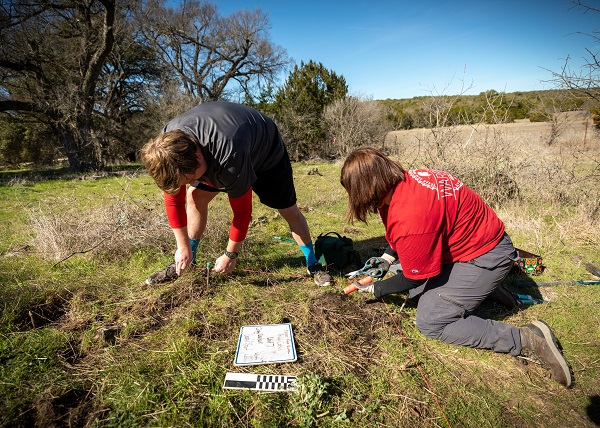
Sifting Through the Layers
Once a bucket was filled, students were off to do a screen test. As part of this process, students dumped the bucket’s contents into a large sifter and moved the dirt across the metal mesh.
“We’re sifting through all of the fine dirt that we don’t want. Hopefully leaving us a whole bunch of stuff[artifacts] to find... you generally look out for stuff that isn’t picked up [by a magnet],” said Josh Deeken, an undergraduate student.
The dirt from each unit was also compared to a color chart found in a Munsell Soil book. This book was used to classify the soil the dirt came from.
If artifacts were found, they were placed in a bag labeled with the unit number, level in which they were found, and site information. Next the artifacts were off to the lab where they would be cleaned, processed, and curated.
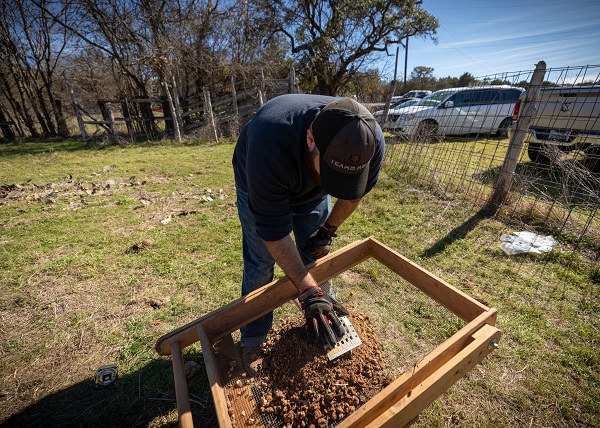
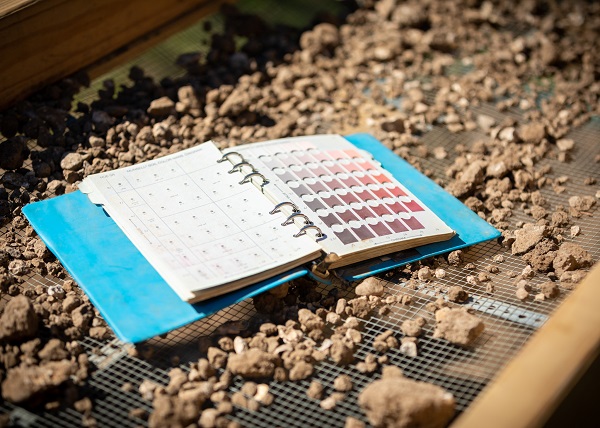
Cleaning and Sorting the Artifacts
Every week, students spent hours in the Texas A&M-Central Texas Anthropology Lab cleaning the items they found at the Priddy Cabin site.
Carefully, they removed the dirt from the artifacts. They didn’t want to damage the artifacts, just knock the dirt off.
It was also important to keep all artifacts from the same unit together. Doing this made sure that each artifact could be traced back to its location at the dig site. It also made it easier for the head of student labwork for the field school to do her job.
As head of student labwork, graduate student Jenna Edney was in charge of processing and cataloging all of the artifacts found at the dig site
“So far I’ve sorted maybe a 100 bags, and some bags have more items than others,” said Edney, “I couldn’t tell you how many artifacts I’ve sorted.”
Although cleaning and processing the artifacts was a long and meticulous task, the work was necessary.
“Ultimately those artifacts are going to end up being curated at a state approved curatorial facility as part of our antiquities permit. So that is their final resting place,” said Dr. Jones.


